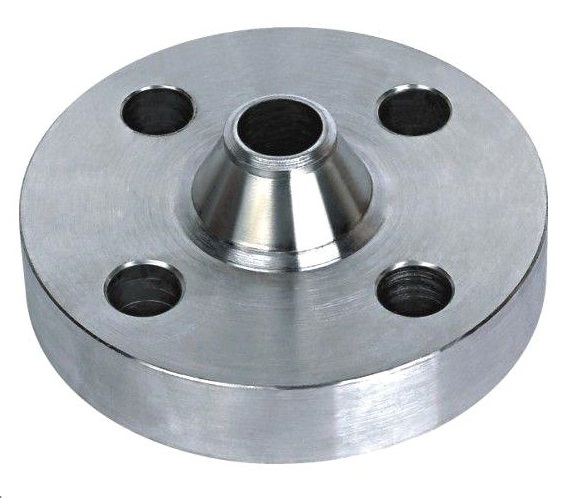
Stainless Steel Reducing Flange
Reducing flange
Reducing flanges are suitable for changing line size, but should not be used if abrupt transition would create undesirable turbulence, as at pump connections. A reducing flange consists of a flange with one specified diameter having a bore of a different and smaller, diameter. Except for the bore and hub dimensions, the flange will have dimensions of the larger pipe size.
What is a Reducing Flange?
Reducing flanges are a specialty flange that are most often used on projects that require the fitting together of different sized pipes. There are several types of reducing flanges including weld-neck reducing flanges, slip-on reducing flanges and threaded reducing flanges. The number one feature of reducing flanges, is that they are a highly economical way to make transitions between pipes of different sizes.
Advantages of Reducing Flanges
- Buffalo Flange, Houston’s reducing flanges come in several types including weld neck, slip-on and threaded
- Reducing flanges are ideal for applications that require the fitting together of different sized pipes
- Buffalo Flange, Houston manufactures reducing flanges to your specifications
- Reducing flanges are the most economical way to mate pipes of differing sizes
Reducing flanges are designed for when there is a change in the pipe size. The predominate flange (dimensions) matching the larger pipe size (NPT) but having a smaller bore matching the smaller pipe size (NPT). These flanges normally come in blind, slip-on, threaded and weld neck flanges. They are available in all pressure classes and provide a good alternative to connecting two different sizes of pipe. This type of flange should not be used if an abrupt transition would create unwanted turbulence, such as at a pump.
A reducing flange consists of a flange with one specified diameter having a bore of a different and smaller, diameter. Except for the bore and hub dimensions, the flange will have dimensions of the larger pipe size.
Designed for use in changing diameters in a piping system. A reducing flange consists of a flange with one specified diameter having a bore of a different and smaller, diameter
Reducing Flanges Types:
Except for the bore and hub dimensions, the flange will have dimensions of the larger pipe size. Reducing flanges are normally provided as one of three types:
Welding neck flange
Slip-on flange
Threaded flange
Uses of Reducing Flanges:
Reducing flanges are used in pipe-to-pipe connections.
Reducing flanges are a little easier to bolt up than non-reducing flanges.
They provide the most perfect solution when you need to connect different size flanges.
These flanges are available in all types and pressures.
Reducing flanges are fixed by welding, gluing or clamping flanges of equal dimensions provided with different connecting pieces.
They offer the simplest and least expensive method of mating two different sized flanges.







